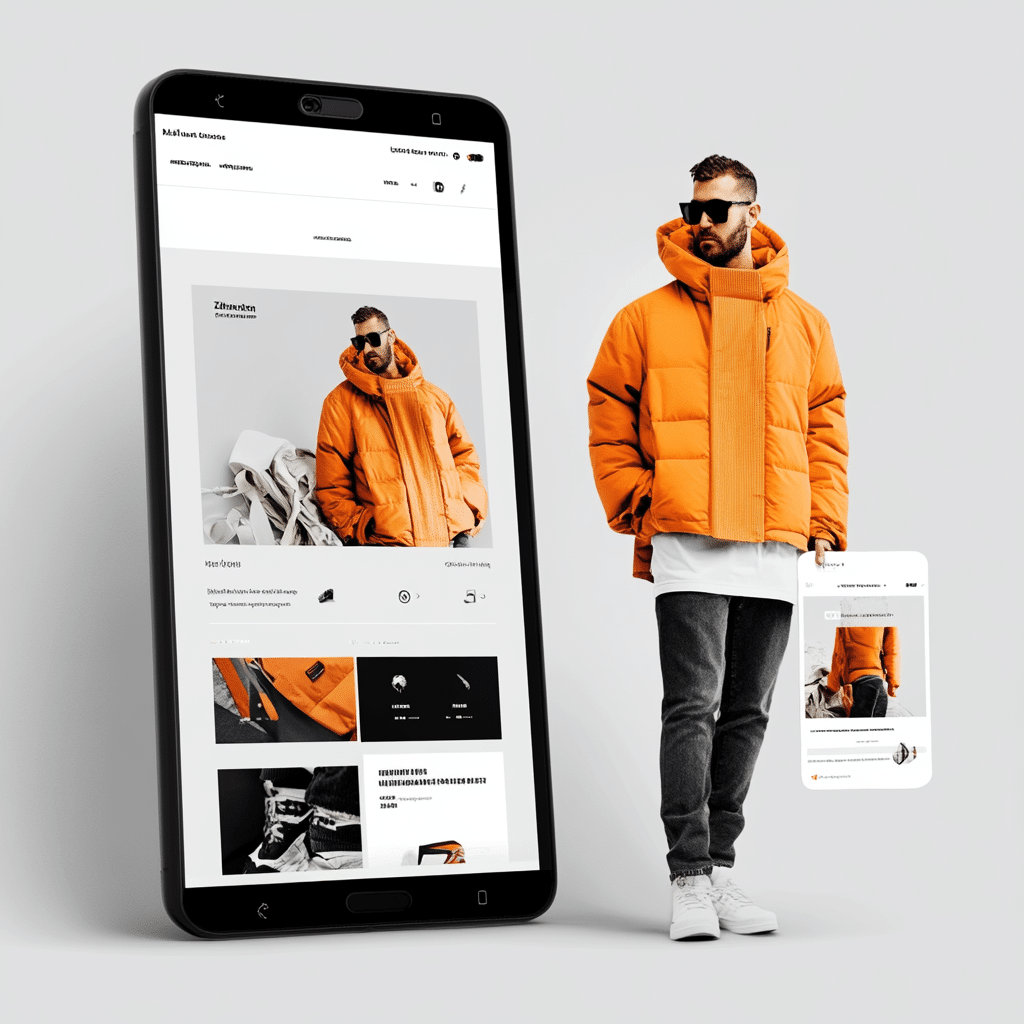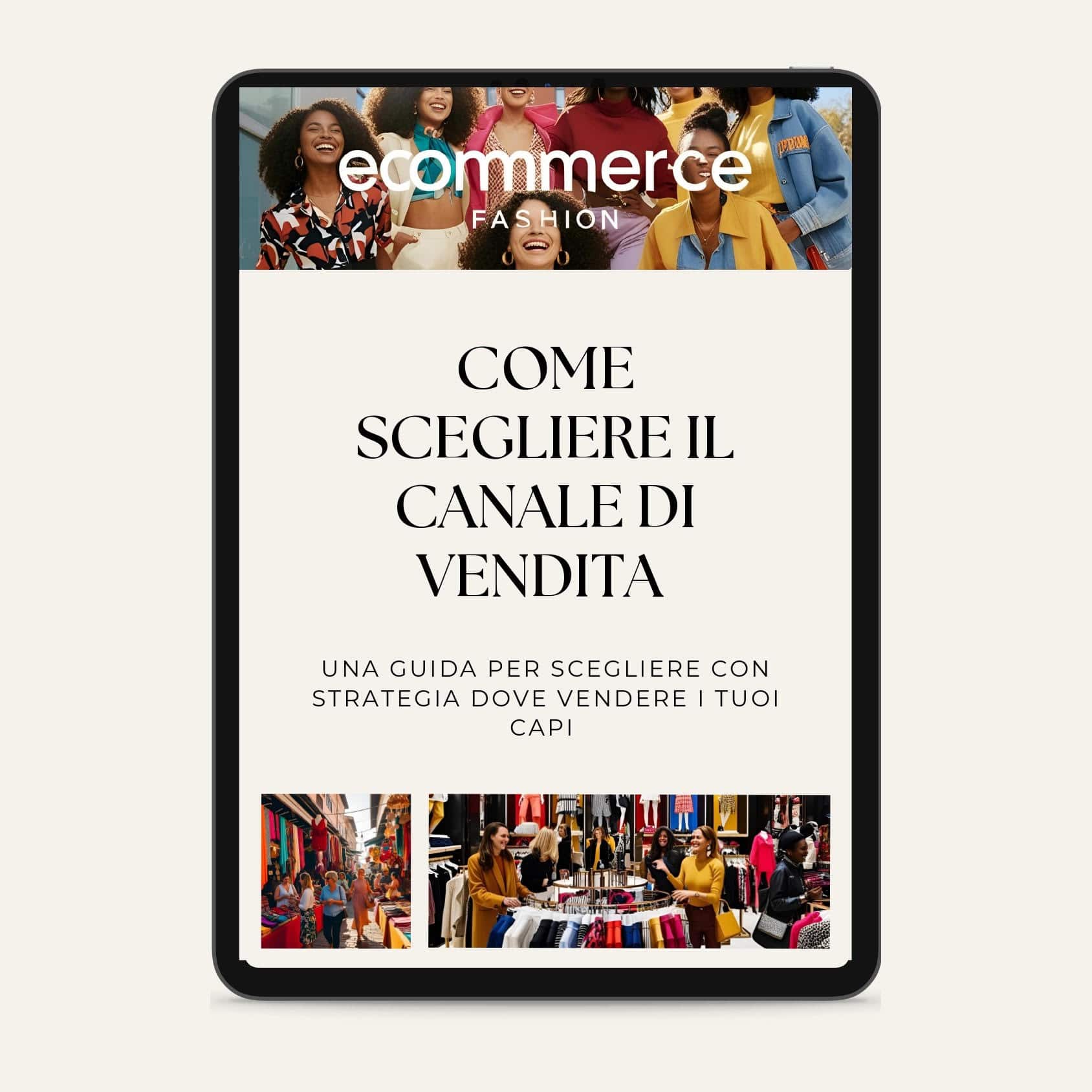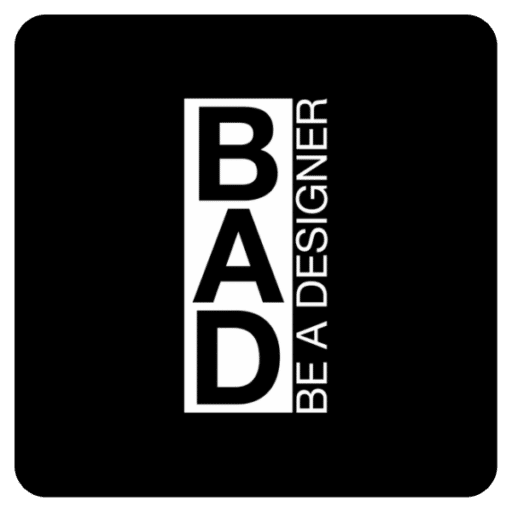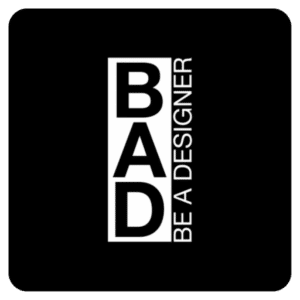Identify the right sales channel is a key strategic decision for the emerging fashion brands. Each option, such as e-commerce, physical retail or marketplace, offers different opportunities and challenges that influence brand positioning, operational management and profitability.
In order to consciously choose the right sales channel for your brand, it is therefore necessary to evaluate factors such as your budget, target audience and growth strategy.
In this article we will analyse the main alternatives available, highlighting the pros and cons of each channel to help you find the most suitable solution for your brand.
I am Corrado Manenti and guide you in choosing the most suitable sales channel for your fashion brand, helping you structure an effective strategy to maximise visibility and profits.
If this is the first article you read, welcome to Be A Designera team of experts specialised in developing competitive brands and creating tailor-made strategies for the fashion market, the right-hand man for those who want to turn their passion for fashion into a successful business.
Sales options for an emerging brand
Choosing the right sales channel is an important decision in a designer's journey, precisely because it represents an important strategic point that can determine the positioning and success of a brand.
Who bets on the?e-commercefor example, will have the advantage of reaching customers all over the world, but will have to invest in digital marketing to make itself known. Conversely, a brand that chooses the in-store sale can offer a more direct and immersive experience, but will face higher running costs. Those who opt for the marketplace, on the other hand, will immediately have access to a large and loyal user base, but with fewer customisation possibilities and reduced profit margins.

The choice of the right channel also indirectly influences the brand positioningA luxury brand, for example, might prefer to sell in boutiques or on an exclusive e-commerce, while a more accessible fashion brand might find it advantageous to exploit marketplaces to maximise distribution. Studying the target audience, available resources and market evolution allows the strategy to be adapted over time.
We then analyse the different sales options in detail, highlighting their strengths and weaknesses to help you identify the most effective solution and ensure the success of your brand.
E-commerce: advantages, challenges and start-up strategies
The union between fashion and digital has become stronger and stronger over the years. It is no coincidence that e-commerce is one of the most accessible choices for emerging brands, offering the possibility of selling without the fixed costs of a physical shop and at the same time radd a potentially unlimited audience. Thanks to the flexibility of digital, a brand can build a strong identity, directly manage customer relations and quickly adapt its offer to market trends.
Although selling online might seem easier, there are many common errors which are underestimated and which can significantly affect the success of a brand.
Among the main advantages of e-commerce are:
- Lower operating costs: there is no need to rent physical space or incur high running costs.
- Global accessibility: the brand can reach customers anywhere, without geographical limits.
- Image and communication control: the website is fully customisable to convey brand values.
On the other hand, there is no shortage of challenges:
- High competition: Emerging in a saturated online market requires targeted investments in marketing.
- Logistics and shipping: it is essential to manage deliveries, returns and customer service efficiently.
- Creation of trust: without physical contact, building customer loyalty requires well-structured digital strategies.
Physical retail: costs, opportunities and planning
Opening a physical shop can strengthen brand identity and offer an immersive shopping experience to customers. The possibility of touching and trying products increases consumer confidence and improves brand quality perception. In addition, direct interaction with customers facilitates loyalty and strengthens the bond with the brand.
In-store sales opportunities:
- Direct experience with the product: customers can see, touch and try on items before purchasing them.
- Personal relationship with customers: direct contact facilitates loyalty and word of mouth.
- Local visibility: the shop can become a landmark for the community and attract a niche audience.
Among the biggest challenges of physical retail:
- High costs: rent, utilities, furniture and personnel represent considerable fixed expenses.
- Geographical limitations: the catchment area is limited to the area where the shop is located.
- Complex operational management: it is necessary to co-ordinate stock, supplies and order management efficiently.
From cost management to sales strategy, we dealt with the organisational and financial aspects of opening a clothing shop in this guide.
Marketplace: selection criteria and maximising results
Online marketplaces represent one of the faster and more effective options to sell fashion products, thanks to their large user base and ready-made infrastructure for sales management. Platforms such as Amazon, Etsy and Zalando offer emerging brands the opportunity to enter the market immediately without having to build an e-commerce from scratch.
This solution greatly simplifies the sales process, especially for emerging brands, as it excludes many management aspects such as payments, logistics and customer service, allowing new brands to concentrate on production and promotion.
Besides several advantages, selling on marketplaces at the same time has some limitations, such as commissions on sales, high competition and less customisation of the shopping experience. Furthermore, relying exclusively on a marketplace can make more difficult brand positioning.
Advantages of selling on marketplaces:
- Immediate access to a wide audience: the brand can exploit the platform's notoriety to gain visibility and increase sales.
- Simplified operational structure: marketplaces handle payments, logistics and customer service, reducing the workload for the seller.
- Reliability of the platform: users tend to trust established marketplaces, facilitating conversion to purchase.
The main criticalities of selling on marketplaces:
- Commissions on sales: marketplaces retain a percentage on each transaction, reducing profit margins.
- Limited customisation: the brand has less control over the shopping experience than a proprietary e-commerce.
- High internal competition: pricing and visibility strategies are needed to distinguish themselves from other vendors.

To get the most out of a marketplace, it is essential to optimise product sheets with professional images and detailed descriptions, collect positive reviews to increase credibility and monitoring prices competition to remain competitive.
How the BAD method helps you choose the ideal channel
Choosing the right sales channel, therefore, is certainly not only a question of cost, but also and above all a question of strategy. The BAD (Be A Designer) method helps emerging brands find the best solution to balance costs, visibility and profits. Through a targeted and customised analysis, this approach allows to structure the business effectively, optimising each commercial choice according to the brand's objectives.
For example, for those who produce garments in small quantitiesit is essential to evaluate the production options best suited to your sales model. Relying on the contract manufacturing can be a strategic solution for reducing production costs and maintaining a high level of quality, without having to make huge investments in infrastructure and raw materials.
To learn more about this, you can read our comprehensive guide on contract clothing production for small quantities.
Cost analysis and evaluation of return on investment (ROI)
Assessing the return on investment (ROI) is essential to understand which sales channel is more sustainable and profitable. Each option - e-commerce, physical retail or marketplace - has different costs, both in the start-up phase and in long-term management. Making decisions based on rough estimates may lead to wasted resources or unprofitable choices.
The method of Be A Designer offers a structured approach to analysing these aspects in a precise manner and, through calculation tools and targeted strategies, helps emerging brands to compare the operational costs of each channel with the potential gains, identifying the most sustainable solution.
Here is how the BAD method can support this evaluation:
- Identification of fixed and variable costs: accurately calculate the initial investment and recurring costs of each channel.
- Estimated potential revenuesforecasting the sales volume needed to achieve profitability based on sales prices and market demand.
- Defining pricing strategies: identifying the optimal profit margin to ensure sustainability and competitiveness.
Thanks to this approach, brands can make informed decisions, avoiding investing in channels that might be unprofitable with respect to their resources and business model.
Practical strategies to optimise sales on each channel
To achieve concrete results, it is not enough to choose a sales channel: it is essential to adopt targeted strategies to maximise its potential. With the Bad method we have the opportunity to help emerging brands develop specific approaches for each sales model, optimising visibility, operational management and customer interaction.

In e-commerce, the priority is to increase traffic and conversions through targeted strategies and a smooth user experience. In physical retail, on the other hand, success depends on the ability to offer an engaging shopping experience, with carefully curated visual merchandising and initiatives such as in-store events to build customer loyalty. Finally, in marketplaces, it is crucial to optimise product sheets, collect positive reviews and monitor prices to remain competitive, making the most of the visibility offered by the platform.
My BAD method is designed not to leave you alone in this strategic phase, providing a structured approach to refine every aspect of sales and position your brand effectively and sustainably on each channel. In my book I talk in more detail about how to sell your fashion collectionbuilding your brand that will thrive over time thanks to a step-by-step method designed to make fashion work in a small way?
Definition of market positioning and product type
In the fashion industry, an emerging brand must distinguish itself through a clear and consistent positioning. This means identifying and studying the target audience to finally build an offer in line with market expectations.
Through an in-depth analysis of competitors and industry trends, the BAD approach makes it possible to identify a brand's strengths and enhance its uniqueness as well as to differentiate the product, making it more competitive and increasing the chances of attracting and retaining the right customers.
Building brand architecture and identifying values
To stand out in the fashion market, it is not enough to have a good product: it is essential to build a strong and recognisable brand identity. A brand with a clear architecture and well-defined values succeeds in communicating consistently, creating an emotional bond with the public and differentiating itself from competitors. Be A Designer provides a strategic approach to structuring brand identity in an authentic way, enhancing the personality and brand strengths. When values are clear and consistent, the brand becomes more memorable, creating trust and loyalty among consumers.

Marketing and communication strategies to support the launch
An effective launch requires a structured marketing strategy capable of generating visibility and involvement from the very beginning. Be A Designer helps emerging brands to build a detailed action plan, using targeted promotion tools to maximise market impact.
The creation of valuable content through blogs, social media and newsletters allows for authentic brand storytelling and community engagement, just as collaborations with strategically selected influencers help to strengthen credibility and expand audiences. Let's not forget advertising campaigns: platforms such as Facebook, Instagram and Google allow you to reach new customers in a targeted manner. Last but not least, e-mail marketing strategies and customised offers support loyalty, maintaining a constant relationship with the customer even after the purchase.
Choosing the right sales channel is crucial to the success of an emerging brand. Each option has advantages and challenges, and the BAD method by Be A Designer helps to make evidence-based strategic decisions.
If you want to identify the most suitable solution for your brand and structure an effective growth path, contact us today for a personalised consultation!
















